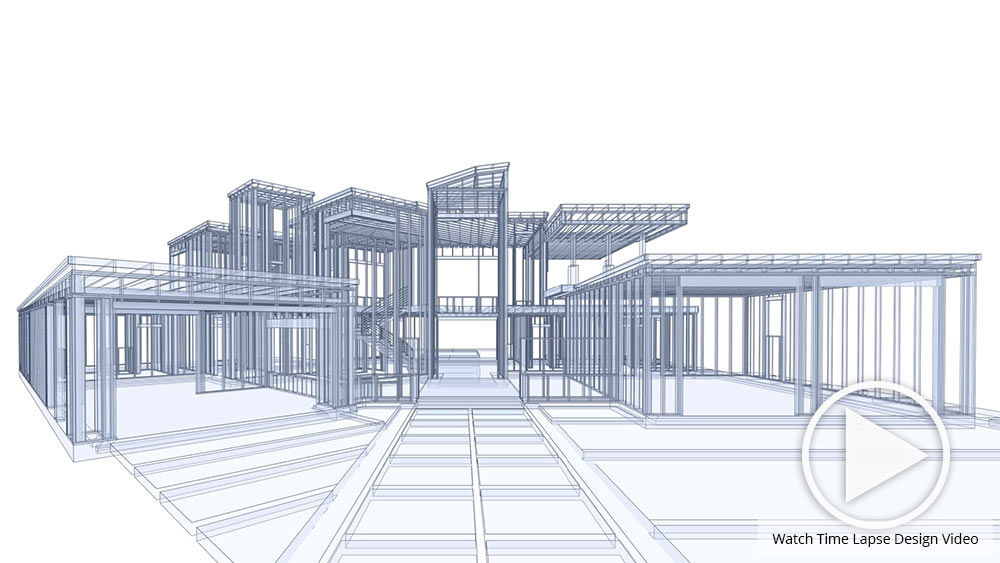The Creative Process Behind Successful Projects from CDA Architects
The Creative Process Behind Successful Projects from CDA Architects
Blog Article
A Thorough Introduction of Architectural Designs and Their Influence on Modern City Planning and Advancement
Building styles have long worked as a mirror to the societal values and technical advancements of their time, playing a vital function in forming contemporary city planning and growth. From the grandeur of Neoclassicism to the utilitarian method of Brutalism, each style has actually presented one-of-a-kind principles that affect city visual appeals and performance. As contemporary challenges occur, including sustainability and community demands, recognizing these historic structures ends up being vital. The resulting dialogue not only educates future layout methods however also raises important questions about the equilibrium between heritage and development in our evolving city landscapes.
Historic Review of Architectural Styles

As societies transitioned through the Center Ages, Gothic design emerged, characterized by its verticality and detailed describing, mirroring the spiritual aspirations of the era. The Renaissance noted a resurgence of classical perfects, combining art and architecture in innovative means that influenced subsequent designs across Europe.

Today, architectural designs proceed to develop, driven by globalization and sustainability problems, reflecting a dynamic interaction in between heritage and advancement. This historic summary underscores the relevance of style as a mirror of societal development and as a driver for city development.
Secret Architectural Styles Explained
The variety of building designs reflects the myriad influences that shape our built atmosphere, each personifying distinctive characteristics and social relevances. Trick building designs consist of Classical, Gothic, Baroque, Modernism, and Postmodernism, each standing for unique historical contexts and aesthetic viewpoints.
Classic architecture, rooted in ancient Greece and Rome, emphasizes symmetry, proportion, and using columns (cda architects). In contrast, Gothic design, growing in the Center Ages, is identified by sharp arcs, ribbed safes, and flying buttresses, producing a spiritual quality in cathedrals. Baroque style, arising in the 17th century, is marked by splendour, fancy ornamentation, and a vibrant interaction of light and shadow
Innovation, which obtained energy in the early 20th century, prioritizes function over form, making use of brand-new materials like steel and glass to create minimal frameworks. Postmodernism, reacting against the austerity of Modernism, embraces eclecticism and historic referral, often including spirited aspects and irony.

Effect On Urban Planning
In forming the growth of cities, building designs considerably affect city preparation decisions. The choice of architectural design frequently dictates the looks, capability, and total personality of urban environments.
Additionally, architectural styles visit their website can impact zoning guidelines and land make use of plans. Urban organizers need to think about the dominating building fads when making areas, making certain that new growths integrate with existing frameworks. This factor to consider promotes cohesive urban landscapes and enhances area identification.
The execution of details building styles can likewise influence socioeconomic elements within a city. High-end contemporary layouts may attract wealthy homeowners and services, leading to gentrification, while much more inexpensive real estate options may prioritize sensible and sustainable designs to fit diverse populaces. cda architects. Inevitably, the interplay in between architectural designs and urban preparation develops vibrant cities that reflect both historic context and contemporary requirements, forming the lived experiences of their occupants
Sustainability and Modern Architecture
Building designs play a critical role in attending to contemporary difficulties, particularly in the realm of sustainability. As metropolitan areas broaden and ecological issues intensify, contemporary style increasingly accepts lasting design principles that focus on energy effectiveness, source conservation, and very little eco-friendly impact.
Contemporary architectural motions, such as biophilic layout and green design, advocate for frameworks that integrate with their surroundings, using natural products and promoting biodiversity. These designs often integrate eco-friendly power sources, such as solar panels and wind turbines, to minimize dependence on fossil gas and lower carbon footprints.
In addition, the assimilation of sophisticated modern technologies, such as clever structure systems, boosts energy management, maximizing source usage while making sure resident useful source convenience. Innovative water monitoring approaches, consisting of rain harvesting and greywater recycling, additional add to lasting city settings.
Especially, sustainability expands past ecological worries; it incorporates social and financial measurements also. By promoting neighborhood well-being and promoting inclusivity, modern building designs line up with sustainable development goals. The development of architectural practices proceeds to shape resilient cities that not just satisfy the you can check here needs of the existing but likewise protect the future for generations to come.
Community Involvement in Style
Community engagement in design offers as a crucial bridge in between designers and the populations they offer, guaranteeing that the built setting reflects the demands and ambitions of its customers. This collaborative procedure invites area members to add their understandings and choices, fostering a feeling of ownership and duty toward the rooms they inhabit.
Reliable community involvement employs numerous approaches, such as workshops, studies, and public online forums, to collect diverse viewpoints. These methods promote a two-way discussion, allowing designers to recognize regional contexts while encouraging citizens to voice their problems and wishes. This inclusivity not just enhances the style high quality however also advertises social equity by resolving the unique difficulties faced by marginalized groups.
In addition, community interaction can bring about innovative services that may not arise in a conventional layout procedure. By integrating local understanding and social worths, engineers can create spaces that resonate more deeply with individuals, boosting use and sustainability. Ultimately, prioritizing community engagement in design processes leads to atmospheres that nurture social communications, support wellness, and enhance area connections, therefore playing a pivotal role in forming modern-day city landscapes.
Verdict
Architectural designs have profoundly affected modern-day city preparation and advancement, showing evolving social and technological contexts. As cities continue to expand and adjust, the continuous dialogue in between architectural heritage and modern-day style principles will certainly stay essential in developing comprehensive, vibrant rooms that improve quality of life and advertise social equity.
Report this page